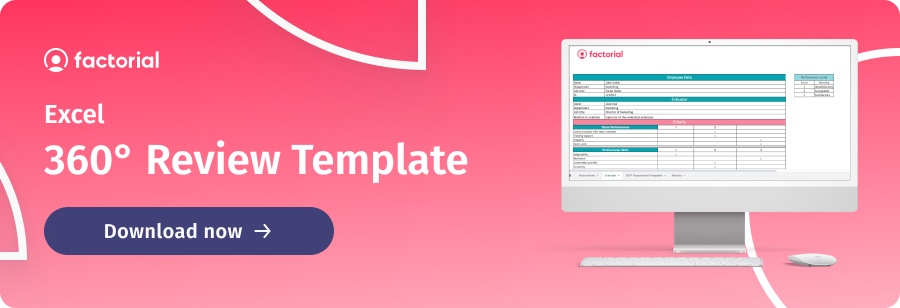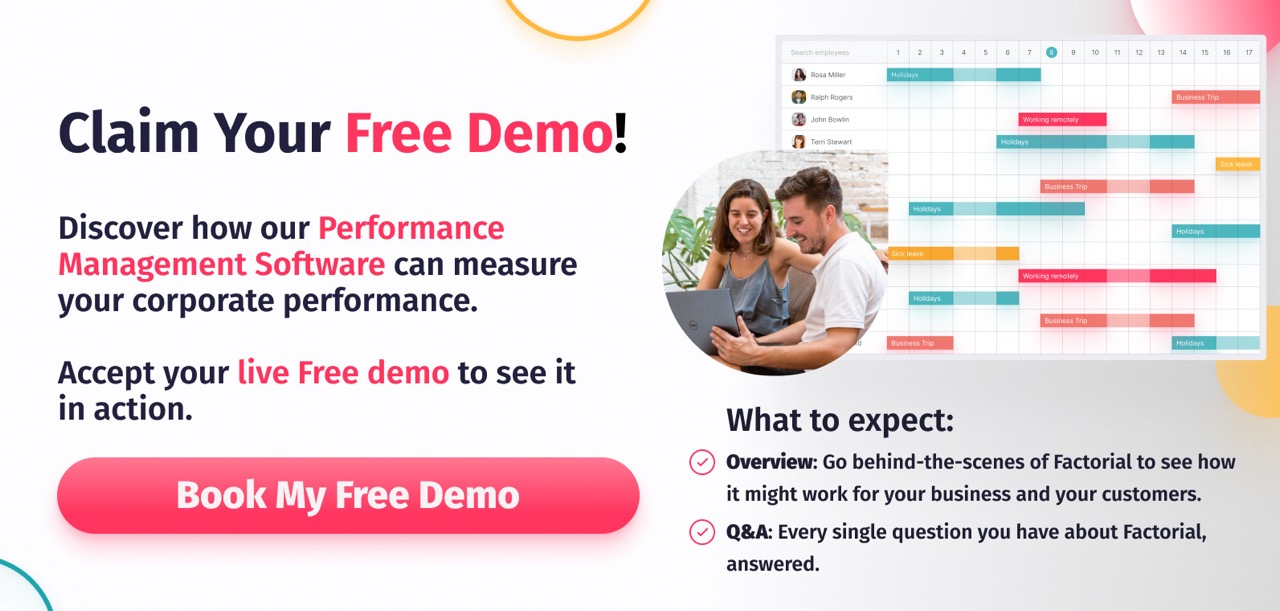Performance coaching is a highly effective technique for improving the performance of your employees. In fact, coaching is now viewed as such an effective tool that, according to McKinsey, companies around the world spend up to $100 billion a year to coach employees in the skills they need to improve corporate performance.
Coaching generally has two main areas of focus: development and performance. In today’s post, we are going to focus on the latter. We will discuss how employee performance coaching can help you improve the performance of your workforce, and what a performance coach needs to do to get the most from their employees.

✅Check here our Performance Management Software
What is Performance Coaching?
So, what is performance coaching in professional development?
Performance coaching definition:
Performance coaching, also known as high-performance coaching, is an ongoing process that aims to improve an employee’s performance in the workplace. It’s not about giving advice or being an expert though – it’s about providing support as a performance coach, sharing feedback, and encouraging continuous improvement.
Employee performance coaching is a form of continuous performance management where a coach tracks an employee’s progress towards established performance goals on an ongoing basis. The focus is on helping and supporting employees so that they can maximize their potential, rather than teaching.
The main pillars of coaching and employee performance management are feedback and collaboration. The aim is to gather as much information as possible to find out how you can support individual employees and help them meet their performance objectives.
How Can Coaching Improve Performance?
Here are just a few of the benefits your workforce can gain from performance coaching in the workplace:
- Self-awareness and constructive feedback are crucial for performance and career success. A performance coach drives self-awareness by providing continuous feedback. This helps employees understand how to better reach their performance goals.
- Employee performance coaching can challenge employees and stop them from becoming too comfortable in their positions. The right challenge can also help them become more committed to their performance so that they become better contributors.
- Performance management coaching can help employees adapt to and manage change by supporting the development of skills such as resilience, innovation, strategy, and communication.
- Coaching for performance also helps you keep your employees on track. This is because everyone has a clear plan of action for moving forward.
- It can help your employees feel better prepared to tackle challenges and contribute more to the team, increasing employee morale and making you more competitive as an organization.
- Your managers and executive team can also benefit from performance coaching. For example, it can help them develop new leadership strategies, and identify potential skills that need to be developed.
Employee Performance Coaching Step-by-Step
Here is a step-by-step guide to employee performance coaching. Make sure you train each and every performance coach in your organization so that they are aware of all stages of the process.
Establish the Objective
The first stage is establishing a clear purpose. This means analyzing two aspects: any performance issues you have identified, and any objectives the employee you will be coaching might have.
You can start by analyzing the employee’s performance to date. Has anything specific been highlighted during their most recent employee performance review or salary review? You could also use an assessment model such as the 9-box grid or stack ranking to help you identify any performance issues.
Once you’ve conducted your evaluation, you need to ask the employee what their objectives are.
What do they hope to accomplish through performance coaching? Which areas of their performance would they like to improve?
It’s important to reach a mutual understanding here so that both parties are aware of the main objective driving the coaching relationship. Make sure you establish a clear objective that you can both work towards.
Ask for Input
Following on from this point, the next step is asking the employee for as much input as possible. As a performance coach, you need to ask questions, actively listen, and be open-minded. You might think you know what the employee needs to work on, but what matters most here is what they think.
Ask them questions about their past performance but focus more on where they want to be in the future. This is the first stage in creating a safe and positive environment where coaching participants are able to open up and be honest about what they would like to achieve.
Share Feedback
It’s also vital that you share feedback and observations at every stage of the coaching process. This will help employees create a sense of self-awareness and be open to different perspectives. Be careful how you handle this though. The aim isn’t to be critical. You want to focus on making it a positive and insightful experience for the employee. Encourage the employee to identify their own focus areas whenever possible.
Identify Measurable Goals
Another important stage of the performance coaching process is working with the employee in order to identify measurable goals. This is where you turn assessments and feedback into actions. Guide the employee and encourage them to select one or two measurable goals that will stretch and challenge them. Make sure they select specific employee performance metrics so that they can measure their progress and get a sense of achievement as they progress. This will help to keep them motivated and engaged with the process.
Follow up & Offer Support
Finally, and perhaps most importantly, follow up on coaching, meet regularly, and offer support. Make sure employees understand that they can reach out to you at any time. This will help you encourage your employees to reach their goals. It also helps to nurture a sense of accountability.
The best way to do this is to meet as regularly as possible. Holding a regular performance appraisal benefits employees in a number of ways. It helps employees stay engaged and ensures they are on track when it comes to meeting their goals. Even if an employee works from home, you should try to conduct a regular performance review for remote employees to encourage them to continuously strive to meet their performance goals.
You also need to make sure you ask the right questions during your appraisals. You can use Factorial’s 360 Performance Review Template to see how they are doing and work out if you need to adjust your performance coaching strategy.
Tips for Coaching Employees to Improve Performance
Now that we have discussed what is a performance coach and the five main stages of effective employee performance coaching, let’s take a look at a few coaching employees tips.
Above all, remember that coaching is more about asking than telling. At each stage, make sure your performance coach resists the urge to tell their assigned employee what to do. Instead, they should focus on continuously asking the right questions, listening, encouraging self-discovery, and challenging them to learn and achieve.
Focus on Building Trust
Trust is key to coaching. Trust also needs to go both ways. This means developing a relationship built on respect, and open and honest feedback.
Build a Coaching Culture
The best way to create a successful coaching program is by building a coaching culture in your organization. This means creating an environment where employees have a growth mindset and want to help each other develop. You need to promote a sense of continuous learning where people feel motivated to learn and improve their performance continuously.
Make coaching a core value in your organization. Design a performance improvement plan for each member of your staff. Create an employee recognition program or implement initiatives like pay for performance to show your employees that you care about their development. This will help you develop a high-performance culture that helps your company thrive.
Monitor Performance Regularly
Make sure you monitor performance regularly to see the impact of your coaching activities. Measure the progress of each employee so that they know if they are on track to hit their goals.
Performance management is an ongoing process, and this means nurturing continuous dialogue between coaches and employees. You could also encourage your employees to conduct regular self-appraisals so that they can review their own performance.
Collect 360 Feedback
Finally, make sure you collect 360 feedback at every opportunity. Ask your coaches how they feel the process is going and ask your employees if the program is meeting their expectations. This will help you detect any areas for improvement so that your workforce can get the most from the initiative.
Performance Coaching Examples
Let’s finish by looking at a couple of employee coaching examples.
There are two main functions of performance coaching: addressing identified performance issues, and the continuous improvement of the performance of your workforce.
Performance Coaching to Address Identified Issues
Coaching can be used to correct any specific performance issues that you identify in an employee before they have a significant impact on their performance.
The aim here is to work with the employee to address and solve identified issues and improve their overall performance. With the right coaching, they can improve their performance and become valued contributors.
Performance Coaching for Continuous Improvement
Performance coaching can also be used to encourage continuous improvement for those employees who are already performing well. By doing so, they can further improve their skills, experience, and abilities, and become even more effective contributors. This can be a great way to upskill an employee and set them up for future promotions and opportunities.



